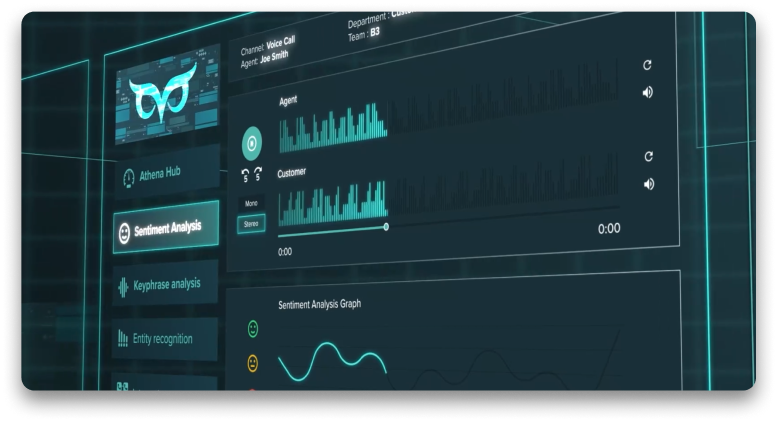When it comes to building and maintaining a customer-focused business, a variety of factors can have an impact on success, and a company’s CSAT (Customer satisfaction) score is one of the most important.
According to a report by Freshdesk, the speed in which queries are resolved will be the most important CSAT (Customer Satisfaction) driver for businesses in 2022.
Why are CSAT scores important?
Poor customer experiences can lead to high levels of dissatisfaction, and a brand’s reputation and revenue streams are often based on how well they treat their customers.
Studies suggest it costs five times more to sell to a new customer than to sell to a happy one. To put this into numbers, if your CSAT metric is 60% this means 40% of your customers are at risk of leaving immediately, which can prove very costly for your business.


Why are customer dissatisfied with customer service?
When placed on hold for 5-15 minutes, 44 percent of customers become annoyed, irritated, or angry, according to the latest studies.
In a nutshell, customer teams are not responding quickly enough.
This is the most common reason for low CSAT scores, and it is caused by three main factors:
- Customer agents are overstretched with too many interactions
- The customer engagement system that agents use aren’t equipped to deal with customer inquiries quickly
- The agents are inexperienced and calls need to be redirected to more qualified team member
So how can a company address CSAT issues?
When an agent is overstretched or underqualified to handle a query, the contact centre system they work on should be able to detect this and prioritise other queries.
The solution to slow responses is not to hire more people, but to have a solid call centre software platform that can seamlessly integrate multiple communication channels into one place and direct requests to the appropriate agents.
Customer service teams must enable their contact centre agents to pick up where they (or another agent) left off with a customer and process all relevant information in one location for seamless communication across all channels.
To help conquer the technical challenges of speeding up your agent responses, we’ve created 5 essential tips for improving response times.
5 Ways to speed up response times and boost CSAT scores
1. Offer an Omnichannel solution
Customers want to contact you via the communication channel that is most convenient for them at the time of contact. This means that customer service representatives must be adaptable and provide all available channels of communication, including calls, SMS, email, Live Chat, and social media.
Okay, you’ve concluded you need an Omnichannel software solution, but where do you start? We’ve got you covered with Connex One Omnichannel.
2. Focus on personalisation for customers through IVR
Interactive Voice Response (IVR) systems are great for call routing, ensuring customers reach their right destination and or agent with the correct skillset to handle their query.
It is an automated call centre phone system technology that allows incoming callers to access information via a voice response system of pre recorded messages – freeing up agents to deal with more complex issues, and giving the caller more autonomy to get to their answer as quick as possible.


However, there needs to always be an option to speak with a live agent or you simply will miss the mark and potentially infuriate customers more than anything else. Simply use your IVR system as a tool to enable and optimise one-on-one interactions with customers to boost CSAT scores. A well designed IVR system will improve operations and KPI’s, particularly during high call volume times.
Some IVRs implement AI features, especially those that come with ASR (Automatic Speech Recognition) features capable of automating the routing and distribution of calls and interactions.
3. Intelligent routing features
Due to high call volumes or complex queries, agents are occasionally confronted with difficult customer interactions that must be redirected to more qualified team members.
Customer service managers can create smart interaction queues that deduce the nature of a customer’s enquiry and route it to the appropriate customer agent by utilising a customer engagement platform with intelligent routing features.
With all agents receiving queries they are qualified and capable of resolving, agent teams can get through more tickets faster, reducing wait times and improving efficiencies.
4. Integrating speech analysis
Ensuring that best quality practices are in place will assist in monitoring customer satisfaction and improving efficiencies to handle more calls faster. One method is to use speech analysis and interaction analytics features.
Speech analytics, when used correctly within CX processes, can improve quality control, increase customer satisfaction, and reduce customer churn. On a daily, weekly, or monthly basis, speech analysis technology, with features like Sentiment Analysis, can be used to generate interaction reports on what complaints or queries customers are most concerned about.
These insights can then be used by customer service managers to modify their agents’ approach to customer engagement. Agents can be better trained on how to handle the most common complaints and reduce resolution times by utilising these customer insights.
5. Incentivise your agents based on performance
It can be difficult to talk to a rude or dissatisfied customer at times, but it is your job as a customer agent to remain polite and provide them with the quickest and most satisfying customer experience possible. Incentivising agents based on performance is one way to achieve this among customer teams.


CX platform tools like Gamification can encourage employees to provide the best possible customer service by tracking their performance and rewarding them for continued excellence.
Managers can enable multi-level environments for your team to earn points, advance levels, and collect badges in exchange for customisable commissionable incentives by configuring the Gamification module to suit your CX goals.
This incentivising approach encourages agents to improve customer response time and performance, while also providing managers with real-time insight into agents’ performance, allowing managers to reward teams accordingly.
To learn more about how the Connex One CCaaS platform is helping customers to succeed, visit: www.connexone.co.uk, get in touch with our team at hello@connexone.co.uk or request a free demo of our platform here.


